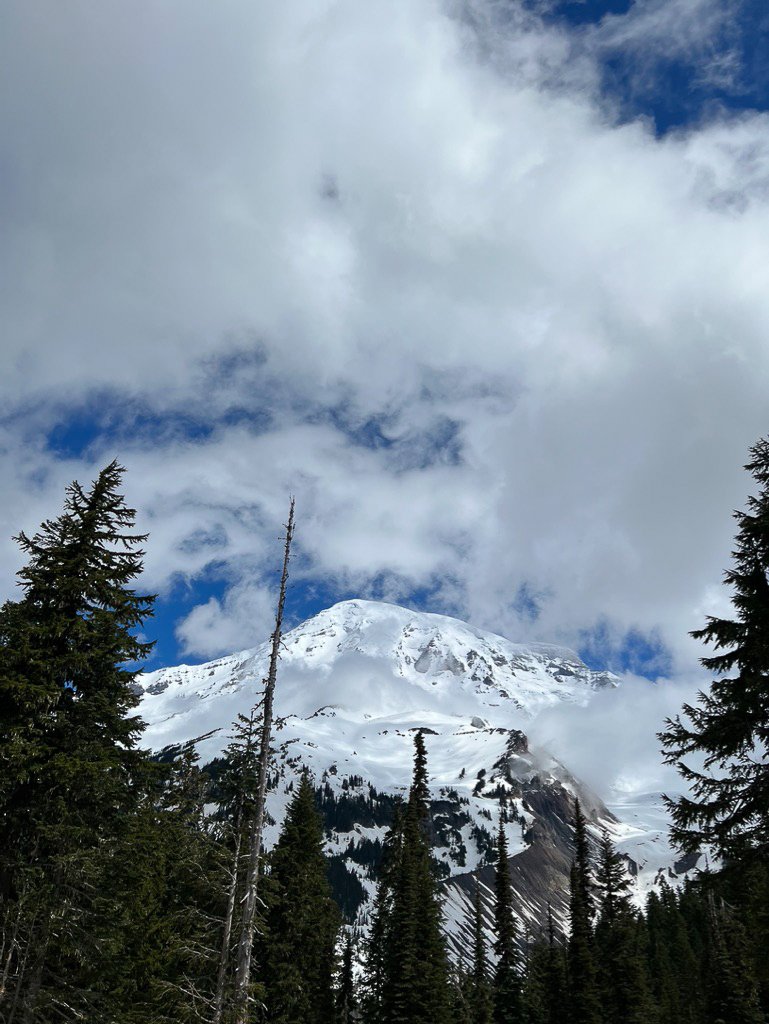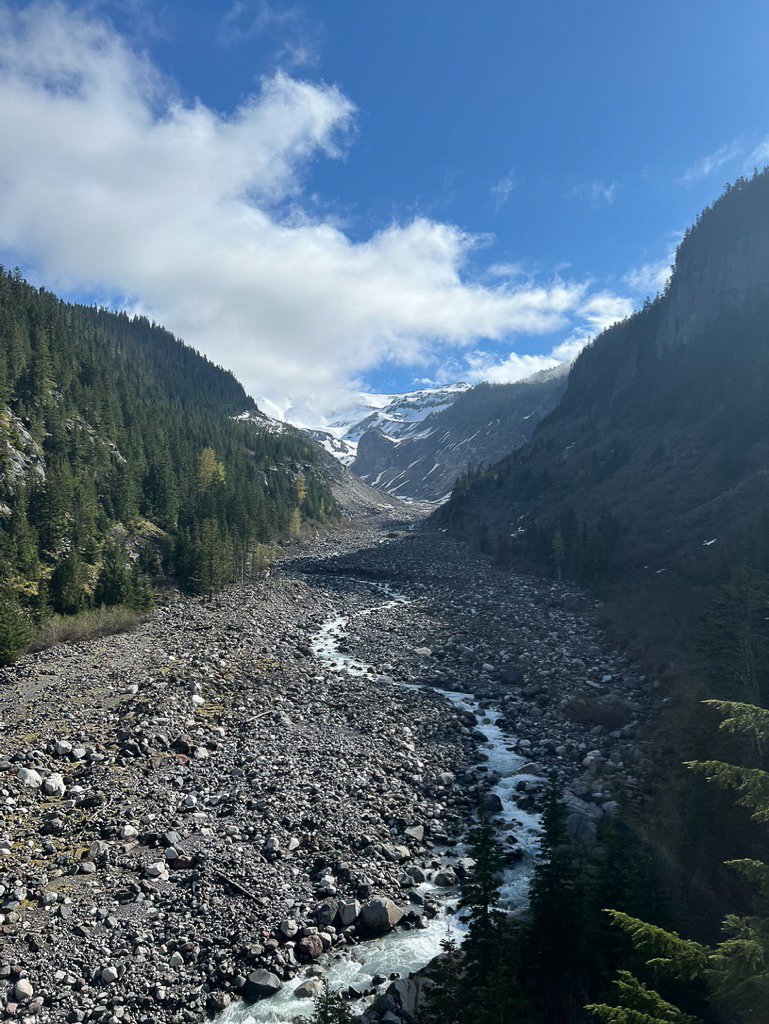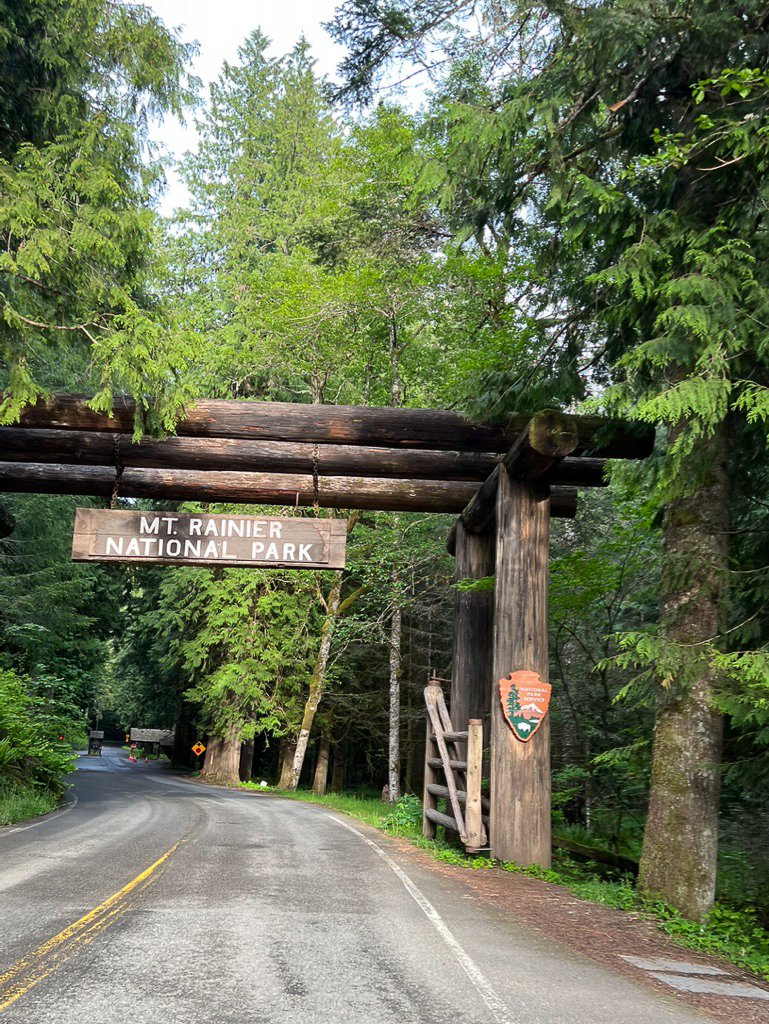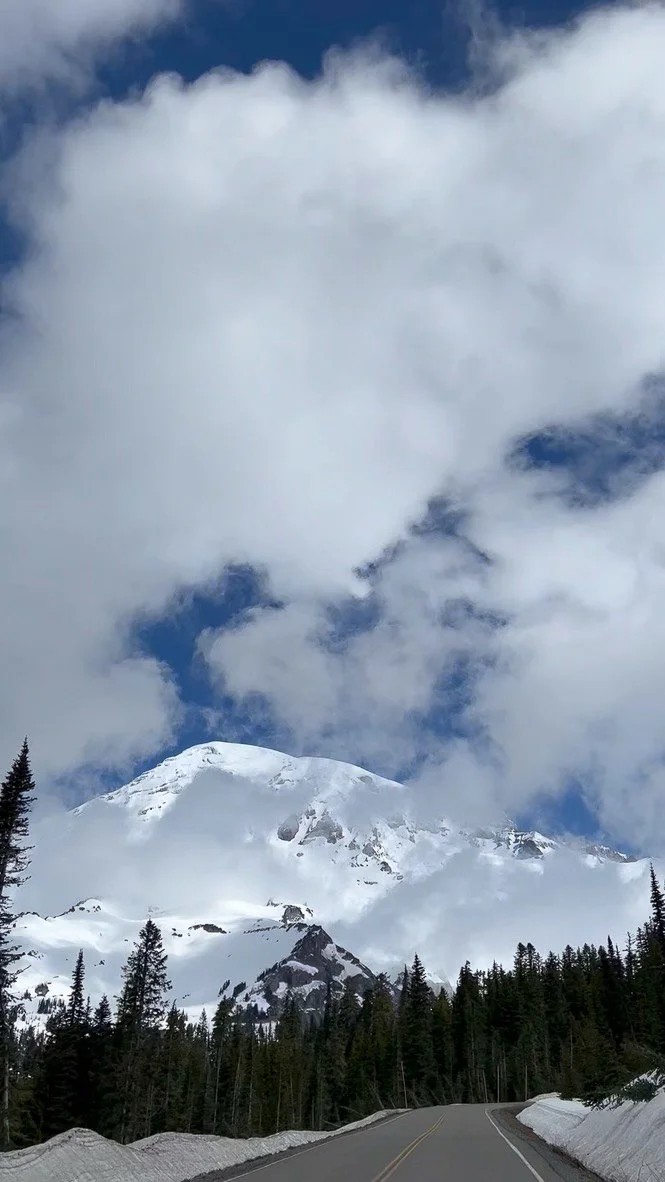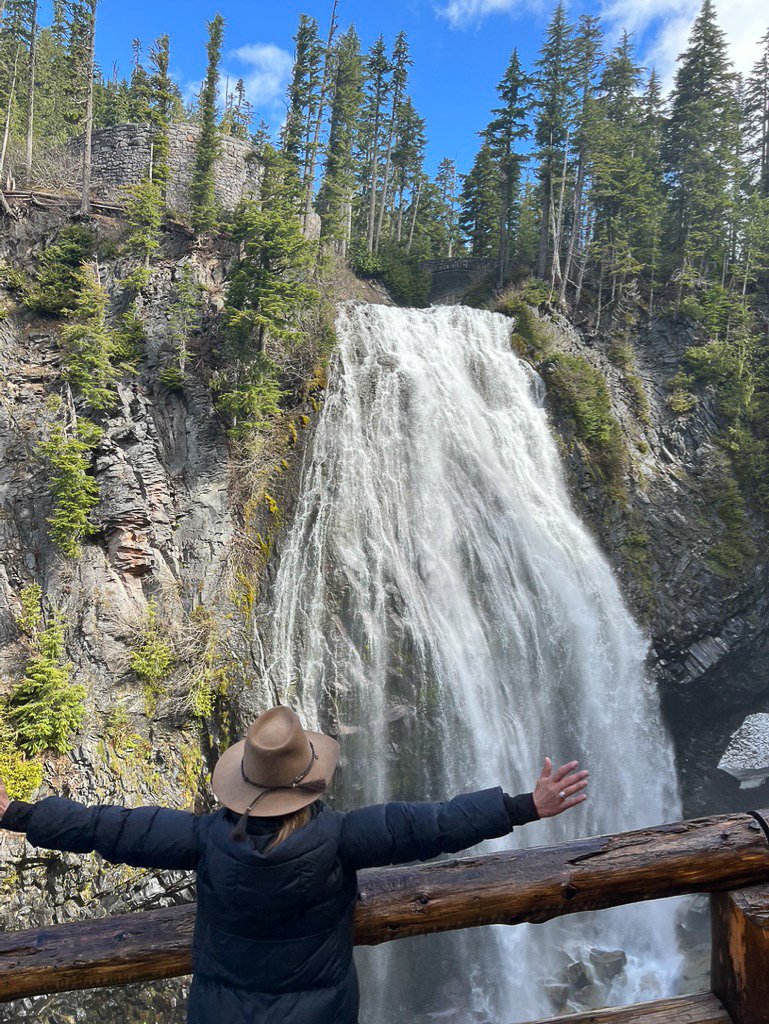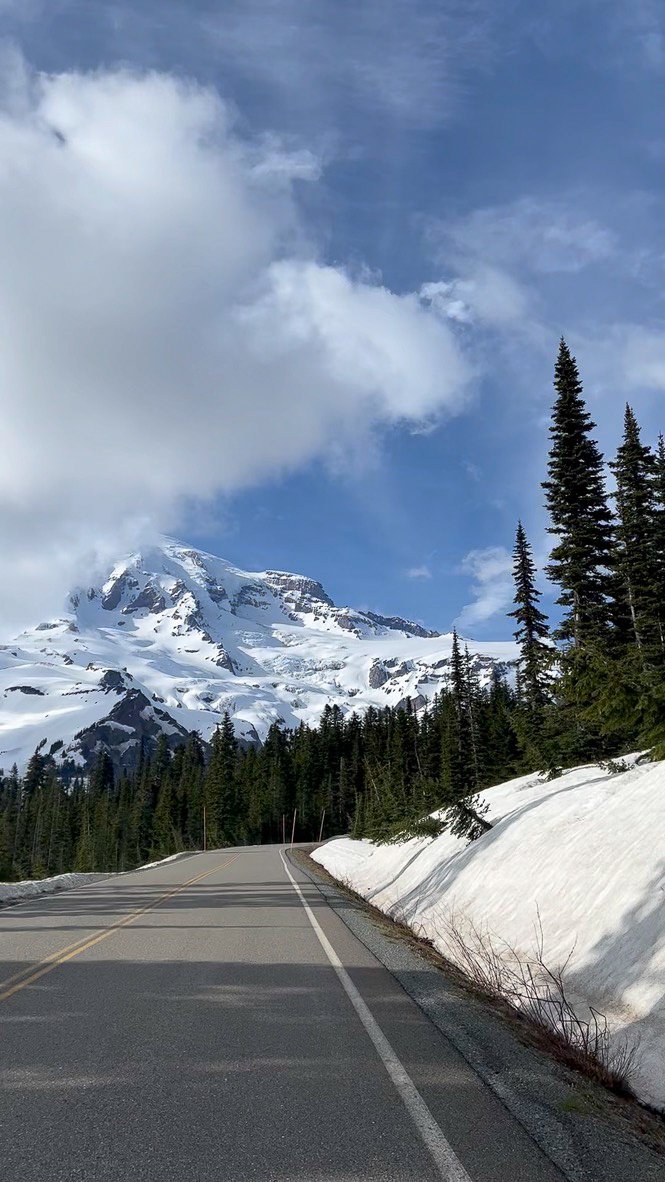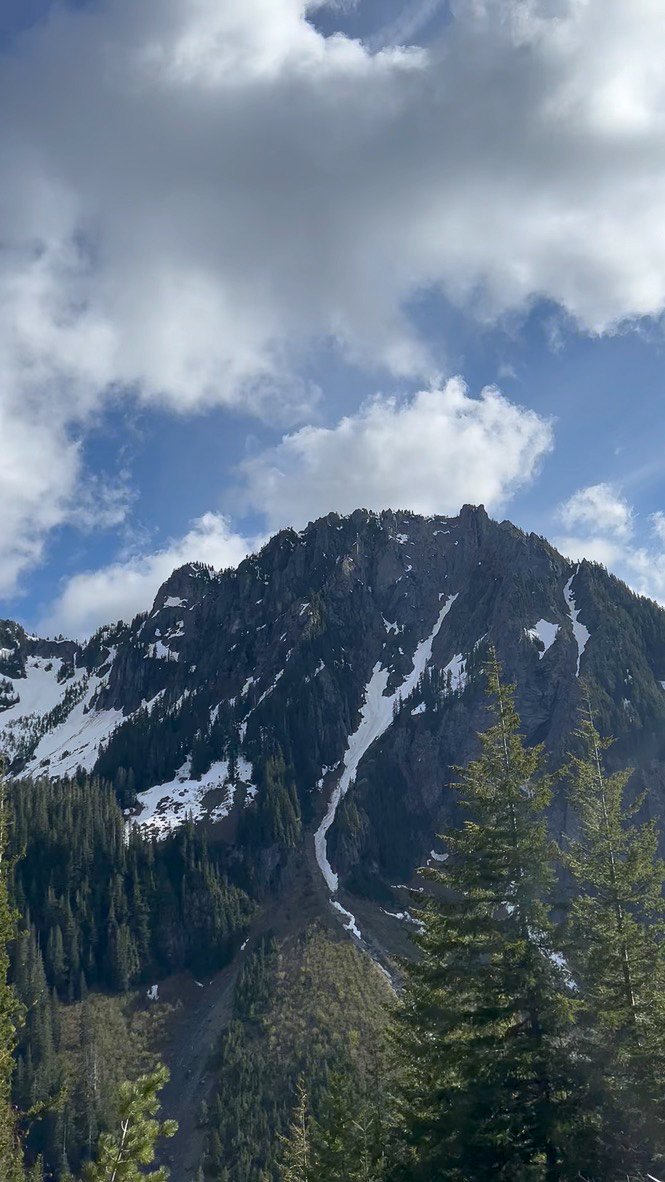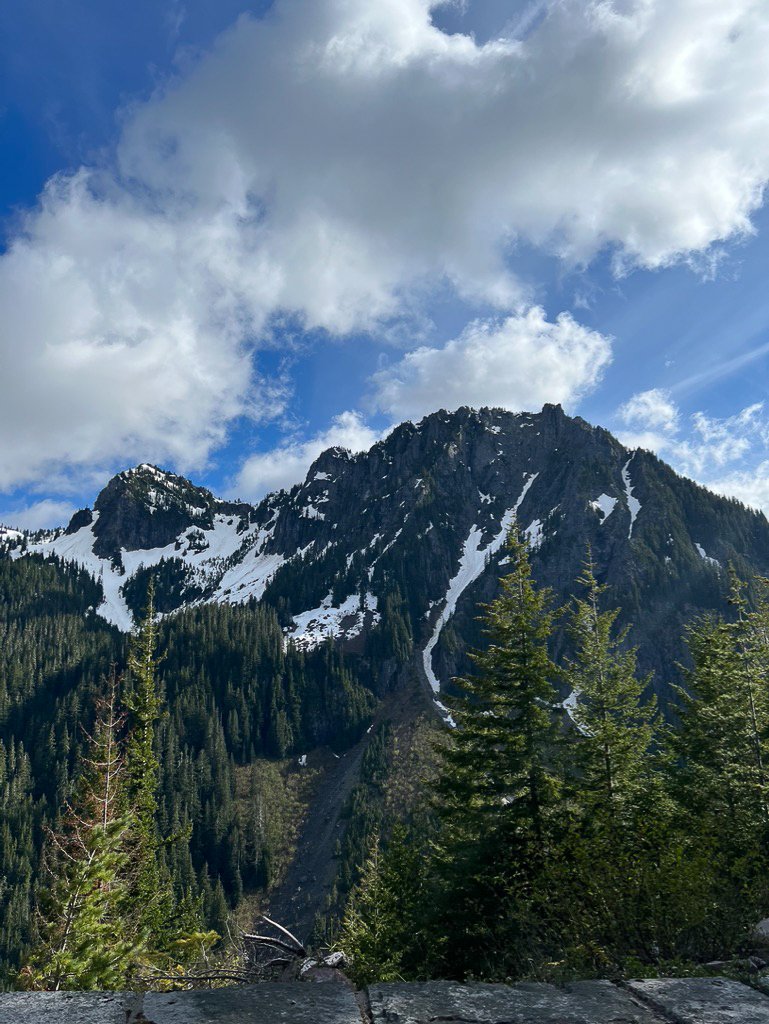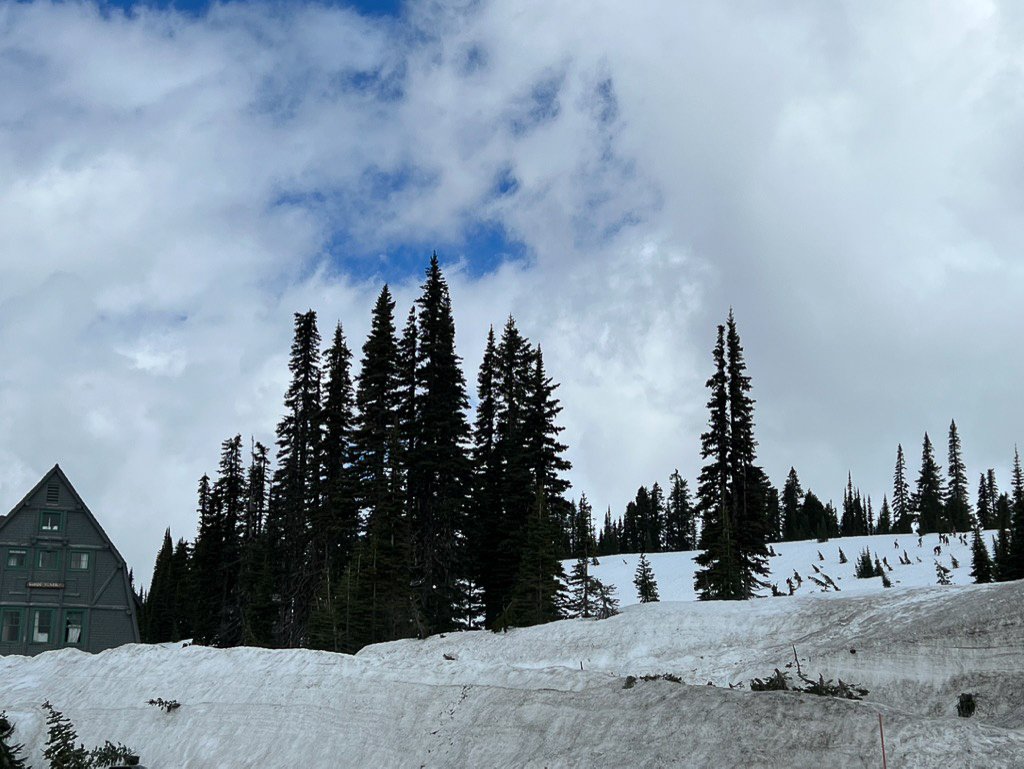Mount Rainier National Park
Towering at 14, 411 ft. (4392 m) Mount Rainier is the most glaciated peak in the contiguous United States. It is also an active stratovolcano last erupting in the mid-1800s, and is considered one of the most dangerous volcanoes in the world due to its proximity to heavily populated areas.
Mount Rainier National Park is a 369-square-mile park named after Mount Rainier, the highest peak in the Cascades.
The mountain spawns five major rivers and is surrounded by the jagged Tattoosh Range with Mount St. Helens in the near distance. It dominates the landscape of western Washington State standing nearly three miles higher than the lowlands to the west and one and one-half miles higher than neighboring mountains.
Mount Rainier is indigenously known as Tahoma, Tacoma, Tacobet, or təqʷubəʔ.
The area offers endless adventure.
-
-
Backcountry and campground permits area available via Recreation.gov.
-
Dogs are allowed in campgrounds and parking lots.
-
Lodging is available at the Paradise Inn.
-
The Paradise Inn and Lodge offers a dining room, cafe, and store with snacks. All are linked here.
About Mount Rainier National Park
Despite its potential danger, Mount Rainier National Park is a popular destination for hikers, nature enthusiasts, and outdoor adventurers.
The park boasts over 260 miles of hiking trails, ranging from easy strolls to challenging multi-day backpacking trips.
The park also offers stunning views of the surrounding mountains, glaciers, and forests, as well as opportunities to see wildlife such as elk, black bears, and mountain goats.
Planning Your Visit to Mount Rainier National Park
Before visiting Mount Rainier National Park, it’s important to plan ahead. Here are some tips for planning your visit:
When to visit
The park is open year-round, but the best time to visit is during the summer months (June-August) when the weather is mild and the wildflowers are in bloom.
Entrance fees
The park charges an entrance fee of $30 per vehicle, which is valid for seven days. Annual passes are also available for $55.
Reservations
If you plan to stay in the park’s lodges or campgrounds, it’s important to make reservations in advance, as these can fill up quickly during peak season.
Lodging
National Park Inn – This historic lodge in Longmire is a great place to call your base while exploring the area. Amenities include a restaurant and an outdoor patio area with BBQ grills.
Paradise Inn (pictured)- Located 19 miles inside the park from the southwest Nisqually Entrance, the historic inn is perfectly positioned in the Paradise area. Originally built in 1916, the lodge has been designated as a National Historic Landmark and has been placed on the National Register of Historic Places.
Paradise Village – This hotel is in nearby Ashford and has family rooms available as well as patios and balconies in some rooms.
Safety Tips for Hiking and Wildlife Encounters in Mount Rainier National Park
Hiking and wildlife encounters can be dangerous if proper precautions are not taken. Here are some safety tips to keep in mind:
Hiking
Always carry plenty of water and snacks, and wear appropriate footwear and clothing. Be prepared for changing weather conditions, and carry a map and compass or GPS device.
Wildlife encounters
Always give wildlife plenty of space and do not approach them. Carry bear spray as a precaution, and make noise to alert wildlife to your presence.
History and Geography of Mount Rainier
Mount Rainier National Park has a rich history dating back over a million years, when volcanic activity began to shape the landscape.
The park was originally inhabited by First Nations, including the Nisqually, who believed that Mount Rainier was a sacred place.
In 1899, Mount Rainier was declared a national park, making it one of the oldest national parks in the United States.
Today, the park is home to a variety of habitats, including subalpine meadows, old-growth forests, and alpine tundra.
The park is also home to over 25 glaciers, making it a popular destination for climbers and mountaineers.
Best Hiking Trails in Mount Rainier National Park
One of the main attractions of Mount Rainier National Park is its extensive network of hiking trails. Whether you’re a beginner or an experienced hiker, there is a trail for you in this park. Here are some of the best hiking trails in Mount Rainier National Park:
Skyline Trail
The Skyline Trail is a popular day hike that offers stunning views of Mount Rainier and the surrounding landscape. The trail is 5.5 miles long and has an elevation gain of 1,700 feet. Highlights of the trail include views of Myrtle Falls, Panorama Point, and the Nisqually Glacier.
Wonderland Trail
The Wonderland Trail is a 93-mile trail that circumnavigates Mount Rainier. The trail is typically done as a multi-day backpacking trip, with most hikers taking 10-14 days to complete the entire loop. The trail offers stunning views of Mount Rainier and the surrounding landscape, as well as opportunities to see wildlife such as black bears and mountain goats.
Spray Park Trail
The Spray Park Trail is a beautiful day hike that offers stunning views of wildflowers, alpine meadows, and waterfalls. The trail is 7.5 miles long and has an elevation gain of 1,500 feet. Highlights of the trail include views of Spray Falls and views of Mount Rainier.
Scenic Viewpoints in Mount Rainier National Park
In addition to its hiking trails, Mount Rainier National Park is also home to some of the most scenic viewpoints in the Pacific Northwest. Here are some of the best scenic viewpoints in the park:
Sunrise Point
Sunrise Point is located at an elevation of 6,400 feet and offers stunning views of Mount Rainier and the surrounding landscape. From Sunrise Point, you can see the Emmons Glacier, the largest glacier in the contiguous United States.
Paradise
Paradise is one of the most popular areas in Mount Rainier National Park, and for good reason. This area offers stunning views of Mount Rainier, as well as wildflowers, meadows, and waterfalls. Paradise is also home to the historic Paradise Inn, a beautiful lodge that has been welcoming guests since 1917.
Reflection Lakes
Reflection Lakes is a beautiful area located on the south side of Mount Rainier. This area offers stunning views of Mount Rainier reflected in the calm waters of the lakes. Reflection Lakes is a popular spot for photographers and is especially beautiful during sunrise and sunset.
Wildlife Encounters in Mount Rainier National Park
Mount Rainier National Park is home to a variety of wildlife, including black bears, mountain goats, elk, and marmots. Here are some tips for safely encountering wildlife in the park:
Black Bears
If you encounter a black bear in the park, stay calm and slowly back away. Do not run, as this can trigger the bear’s predatory instinct. Make noise to alert the bear to your presence, and carry bear spray as a precaution.
Mountain Goats
Mountain goats are common in the alpine areas of the park. If you encounter a mountain goat, give it plenty of space and do not approach it. Mountain goats are known to be aggressive if they feel threatened, so it’s important to give them plenty of space.
Elk
Elk are common in the park’s lowland forests and meadows. If you encounter an elk, give it plenty of space and do not approach it. Elk are known to be aggressive during the breeding season (September and October), so it’s especially important to give them plenty of space during this time.
Things To Do Near Mount Rainier National Park
If you have extra time during your visit to Mount Rainier National Park, there are plenty of other things to do in the surrounding area. Here are some options:
Mount St. Helens
Mount St. Helens is another active volcano located in Washington state. The mountain erupted in 1980, and today the area is a national monument with hiking trails, interpretive centers, and volcanic landscapes.
Seattle
Seattle is located about 2 hours from Mount Rainier National Park and is a great place to explore if you have extra time. Some highlights of Seattle include the Space Needle, Pike Place Market, and the Museum of Pop Culture.
Olympic National Park
Olympic National Park(pictured) is located on the Olympic Peninsula in western Washington and offers a variety of landscapes, including rainforests, beaches, and mountains.
Camping and Lodging Options in Mount Rainier National Park
Mount Rainier National Park offers a variety of camping and lodging options for visitors. Here are some of the best options:
Campgrounds
The park has several campgrounds, including Cougar Rock, Ohanapecosh, and White River. These campgrounds offer a variety of amenities, including restrooms, picnic tables, and fire pits.
Lodges
The park has several lodges, including Paradise Inn and National Park Inn. These lodges offer comfortable accommodations, as well as restaurants and gift shops.
Backcountry Camping
For those who want to experience the park’s wilderness areas, backcountry camping is a great option. The park offers several backcountry campsites, which require a permit and advanced planning.
Backcountry and Campground Permits
Mount Rainier Wilderness is a complex ecosystem. Vegetation is diverse and reflects the varied climatic and environmental conditions encountered across the area's 12,800-feet elevation gradient.
Species known to inhabit or visit the park include more than 800 vascular plants, 159 birds, 63 mammals, 16 amphibians, 5 reptiles, and 18 native fishes.
The Mount Rainier Wilderness contains 26 named glaciers across 9 major watersheds, with 382 lakes and 470 rivers and streams.
Backcountry and campground permits area available via Recreation.gov.
Food and Drink
The Paradise Inn and Lodge offers a dining room, cafe, and store with snacks. All are linked here.
Narada Falls
Narada Falls drop about 188 feet in two tiers of 168 feet and 20 feet.
Narada is a Hindu word meaning and "pure" or "uncontaminated".
The Narada Falls parking area is located approximately 17 miles east of the park’s southwest entrance and is open year-round. There is a view of the top of Narada Falls from the upper pullout.
Depending on the weather, the trail to the lower viewpoint can be hazardous due to snow and ice. These wintery conditions can linger into the summer months so plan accordingly and be prepared.
Narada Falls is the largest waterfall accessible by car in the park, and one of the most impressive.
Nisqually Glacier
The Nisqually Glacier is one of the most massive and accessible glaciers on Mount Rainier.
The 2.2-mile Nisqually Vista Trail gives you access to the glacier.
The trail takes around 45 minutes to complete (depending on pace) with a 400ft elevation gain.
The Nisqually Glacier is the primary water source for the Nisqually River that carves its way through Washington State all the way to the Puget Sound.
The Giant of The Cascades
Mount Rainier National Park is a stunning destination that offers something for everyone.
Whether you’re a hiker, nature enthusiast, or wildlife lover, this park has it all.
With its extensive network of hiking trails, scenic viewpoints, and diverse wildlife, Mount Rainier National Park is a must-visit for anyone who loves the great outdoors. So what are you waiting for? Start planning your visit today!
Geology
Mount Rainier an active stratovolcano. Volcanic activity began here between one half and one million years ago, with the most recent eruption cycle ending about 1,000 years ago.
The mountain is primarily composed of andesite and dacite lava flows as well as pumice eruptions. The types of rocks found on this volcano indicate a variation in chemical composition when compared to other volcanoes in the area, such as Mount St. Helens.
Although Mount Rainier has not experienced a major eruption in the past 500 years, it is potentially the most dangerous volcano in the Cascade Range given the volcano's massive height and immense cover of snow and glacier ice.
An eruption here could trigger debris flows at that are estimated to be much larger, and potentially could travel greater distances, than that of Mount St. Helens in 1980.

